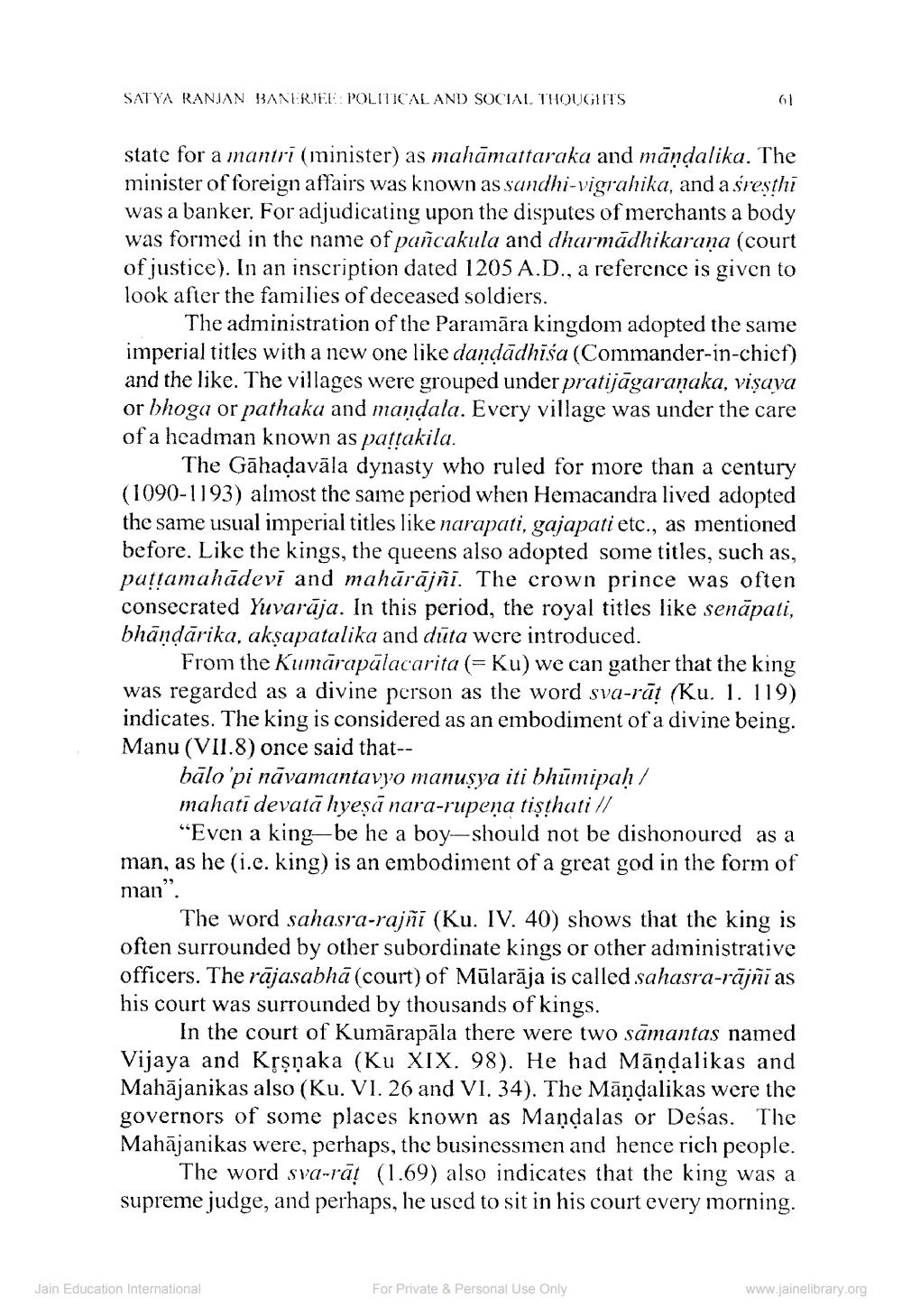________________
SATYA RANJAN BANERJEE: POLITICAL AND SOCIAL THOUGHTS
state for a mantri (minister) as mahāmattaraka and māṇḍalika. The minister of foreign affairs was known as sandhi-vigrahika, and a śreṣthi was a banker. For adjudicating upon the disputes of merchants a body was formed in the name of pañcakula and dharmādhikaraṇa (court of justice). In an inscription dated 1205 A.D., a reference is given to look after the families of deceased soldiers.
61
The administration of the Paramāra kingdom adopted the same imperial titles with a new one like daṇḍādhīsa (Commander-in-chief) and the like. The villages were grouped under pratijāgaraṇaka, vişaya or bhoga or pathaka and maṇḍala. Every village was under the care of a headman known as paṭṭakila.
The Gahaḍavāla dynasty who ruled for more than a century (1090-1193) almost the same period when Hemacandra lived adopted the same usual imperial titles like narapati, gajapati etc., as mentioned before. Like the kings, the queens also adopted some titles, such as, paṭṭamahādevī and mahārājñī. The crown prince was often consecrated Yuvaraja. In this period, the royal titles like senāpati, bhāṇḍārika, akṣapatalika and dūta were introduced.
From the Kumārapālacarita (= Ku) we can gather that the king was regarded as a divine person as the word sva-rāt (Ku. 1. 119) indicates. The king is considered as an embodiment of a divine being. Manu (VII.8) once said that-
bālo 'pi nāvamantavyo manuşya iti bhumipaḥ/ mahati devata hyeṣā nara-rupeņa tiṣṭhati //
"Even a king-be he a boy-should not be dishonoured as a man, as he (i.e. king) is an embodiment of a great god in the form of man".
The word sahasra-rajñi (Ku. IV. 40) shows that the king is often surrounded by other subordinate kings or other administrative officers. The rajasabhā (court) of Mularāja is called sahasra-rajni as his court was surrounded by thousands of kings.
In the court of Kumārapāla there were two samantas named Vijaya and Kṛṣṇaka (Ku XIX. 98). He had Maṇḍalikas and Mahajanikas also (Ku. VI. 26 and VI. 34). The Māṇḍalikas were the governors of some places known as Mandalas or Deśas. The Mahajanikas were, perhaps, the businessmen and hence rich people. The word sva-rat (1.69) also indicates that the king was a supreme judge, and perhaps, he used to sit in his court every morning.
Jain Education International
For Private & Personal Use Only
www.jainelibrary.org




